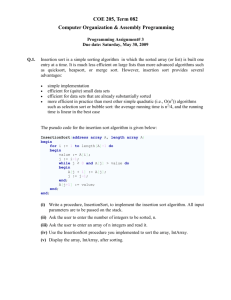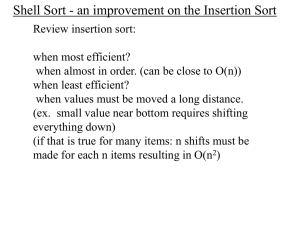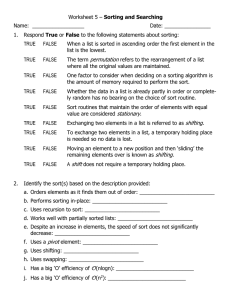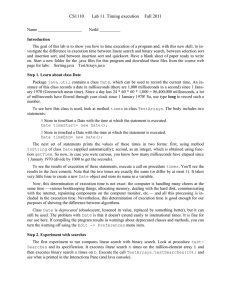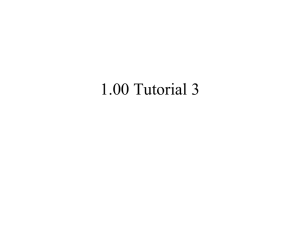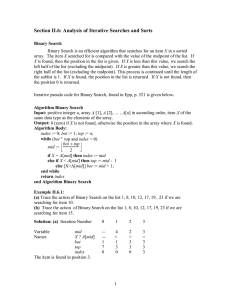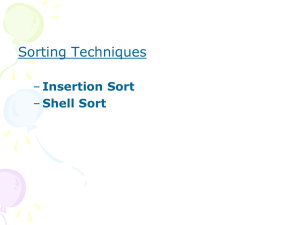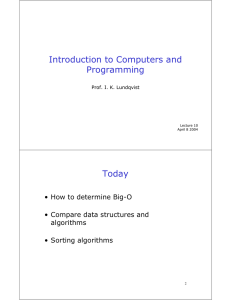Tutorial 11 Solutions
advertisement
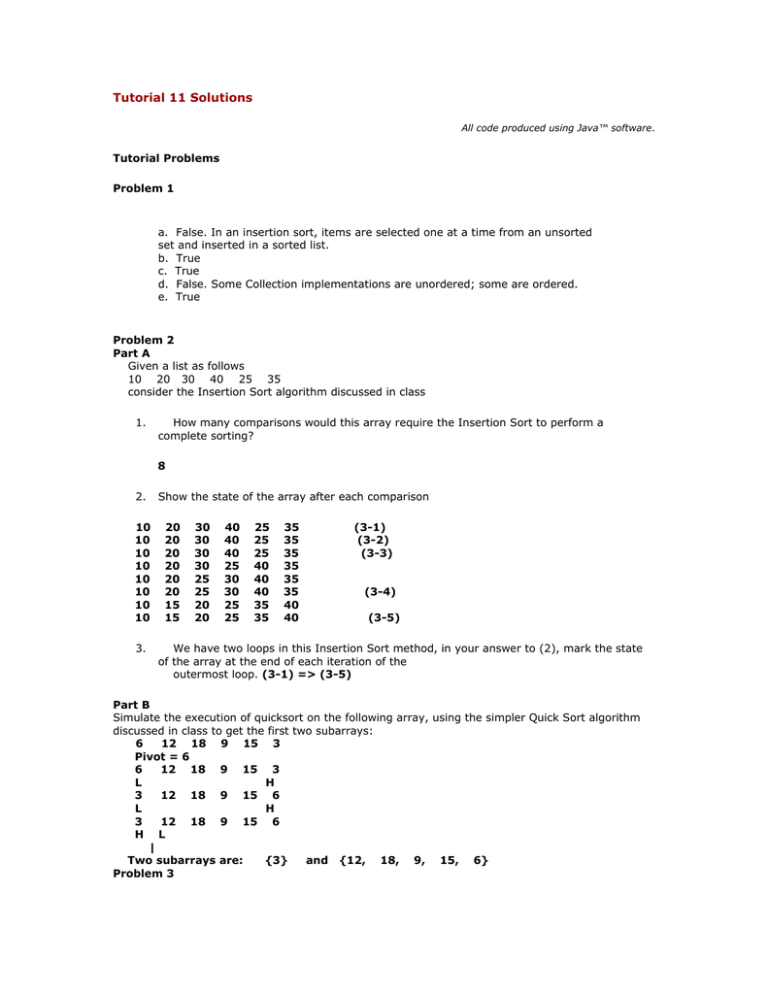
Tutorial 11 Solutions
All code produced using Java™ software.
Tutorial Problems
Problem 1
a. False. In an insertion sort, items are selected one at a time from an unsorted
set and inserted in a sorted list.
b. True
c. True
d. False. Some Collection implementations are unordered; some are ordered.
e. True
Problem 2
Part A
Given a list as follows
10 20 30 40 25 35
consider the Insertion Sort algorithm discussed in class
1.
How many comparisons would this array require the Insertion Sort to perform a
complete sorting?
8
2.
10
10
10
10
10
10
10
10
3.
Show the state of the array after each comparison
20
20
20
20
20
20
15
15
30
30
30
30
25
25
20
20
40
40
40
25
30
30
25
25
25
25
25
40
40
40
35
35
35
35
35
35
35
35
40
40
(3-1)
(3-2)
(3-3)
(3-4)
(3-5)
We have two loops in this Insertion Sort method, in your answer to (2), mark the state
of the array at the end of each iteration of the
outermost loop. (3-1) => (3-5)
Part B
Simulate the execution of quicksort on the following array, using the simpler Quick Sort algorithm
discussed in class to get the first two subarrays:
6
12 18 9 15 3
Pivot = 6
6
12 18 9 15 3
L
H
3
12 18 9 15 6
L
H
3
12 18 9 15 6
H L
|
Two subarrays are:
{3}
and {12, 18, 9, 15, 6}
Problem 3
{Alice=2, Andrew=1, Ben=1, Jennifer=1, Julia=1, Melissa=1, Steve=3}
Design Exercises
Part 1.
A.
Answer: b.
B.
Using Studetns' IDs as the key, one only needs to perform O(logn) number of comparisons to find
a particular student's grade.
Using Student's grade as the key, one needs to perform O(n) number of comparisons to find a
particular student's grade, since we must search through the entire tree to find a student with the
matching ID.
Part 2.
We will use students' IDs as keys to both hash tables and binary search trees. Hashtables will give
the best lookup performance (constant lookup time), assuming that student IDs are uniformly
distributed.
Part 3.
Answer: b.
Part 4.
Part 5.
A.
public class Student {
String name;
int id;
int grade;
public int hashCode() {
return id;
}
public boolean equals (Object
s) {
//insert your code below
Student stu = (Student) s;
if (stu.id == id) {
return true;
} else {
return false;
}
}
}
B.
Answer: 100, 200, 300, 400, 500

